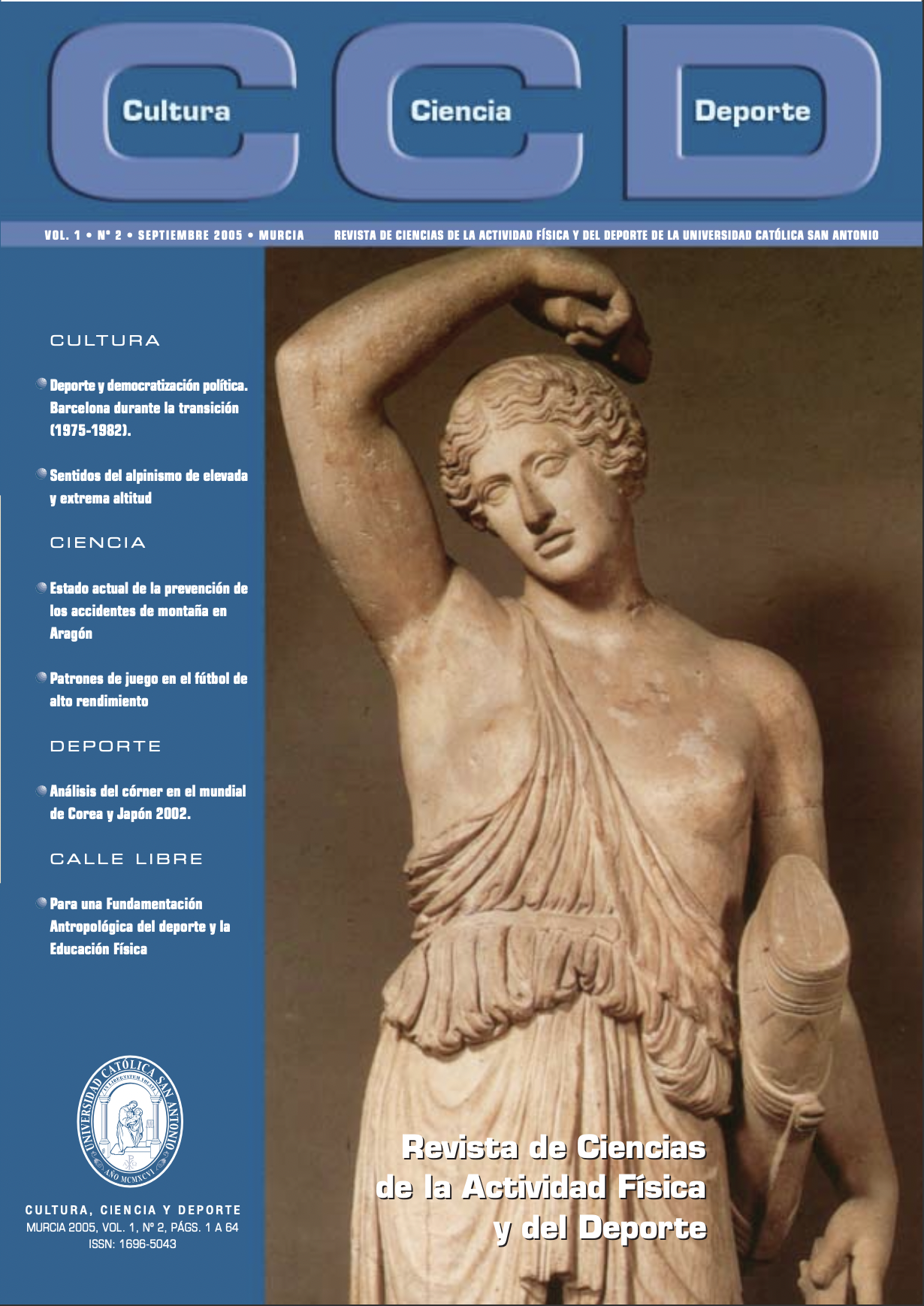Estado actual de la prevención de los accidentes de montaña en Aragón. (Actual state of prevention of casualities in the mountains in Aragon).
DOI:
https://doi.org/10.12800/ccd.v1i2.92Abstract
El número de rescates en montaña, al igual que el número de heridos, sigue una línea ascendente en España y en Aragón, que es donde se ubica cerca del 40% del total de los rescates. Sin embargo, los montañeros rescatados sólo son la punta del iceberg de la asistencia que se dedica a los accidentes de montaña; los accidentados que no solicitan rescate también consumen recursos económicos. Partiendo de la base de que los accidentes de montaña son un claro problema de Salud Pública, es necesario conocer el estado actual de la prevención de los accidentes de montaña en Aragón, con los objetivos de: • Analizar las necesidades reales para buscar el equilibrio entre necesidad, oferta y demanda, a partir de la adecuada utilización de los recursos. •Establecer las necesidades de los colectivos implicados (usuarios, profesionales e instituciones) para reducir la incidencia y severidad de los accidentes de montaña. Para ello, hemos utilizado los resultados de las campañas institucionales Montañas para Vivirlas Seguro de los años 2000, 2001 y 2002, se han analizado las ocupaciones relacionadas con las actividades deportivas en la montaña y hemos consultado directamente con las instituciones implicadas. El nivel de formación e información del usuario de la montaña en Aragón no es el adecuado para el riesgo potencial de las actividades de montaña; mientras que se evidencia la necesidad de reglar algunas profesiones de la montaña. El rescate en montaña es efectivo, eficaz y eficiente; la medicalización es efectiva, eficaz y no eficiente (atendiendo a los criterios de necesidad, oferta y demanda) y la prevención –a pesar de los esfuerzos– es no eficaz, no eficiente y no efectiva. Por todo ello, es urgente la creación de un servicio de vigilancia de los accidentes de montaña, así como un centro que coordine las propuestas y actuaciones orientadas a prevenir los accidentes de montaña.
Palabras clave: Salud pública, prevención, riesgo, accidente de montaña.
===
Abstract
The number of mountain rescues, as the number of injured mountaineering, they keep growing in Spain, and in Aragon where they take place nearly 40 % of the rescues. However, the rescued mountaineering only are the top of the iceberg of the mountain assistance; mountaineering who suffer an accident but do not call any mountain rescue services consume economic resources too. Mountain accidents are a problem of Public Health, therefore it is necessary to know the current situation of mountain accident prevention in Aragon. The aims of this study were: • To analyze the real requirements for the balance between need, offer and demand, for the suitable application of the resources. • To establish the requirements of the implied groups (users, professionals and institutions) to reduce the effect and severity of the mountain accidents. We have used the results of the institutional campaigns Montañas para Vivirlas Seguro 2000, 2001 and 2002, the occupations related to the sports mountain activities have been analyzed and we have directly consulted with the implied institutions. Mountain knowledge and information of the mountain users in Aragon are not adapted to the potential risk of the mountain activities; whereas there is demonstrated the need to rule some mountain professions. The mountain rescue is effective and efficient; the medical assistance is effective, but not efficient (attending to the criteria of need, offer and demand) and the prevention is neither effective nor efficient. Therefore, it is necessary the development and implementation of a mountain injury registry, as well as a center that coordinates the research work on mountain accident prevention as a basis for the design of strategies aimed at informing, educating and training people interested in mountain sports.
Key words: Public health, prevention, risk, mountain accident.
Downloads
How to Cite
Issue
Section
License
The authors who publish in this journal agree with the following terms:
- The authors retain the copyright and guarantee the journal the right to be the first publication of the work as well as licensed under a Creative Commons Attribution License that allows others to share the work with recognition of the authorship of the work and the initial publication in this journal.













